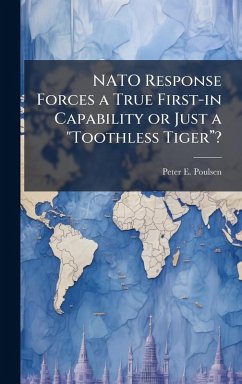At the Prague Summit in 2002, NATO Heads of State announced the creation of the NATO Response Force (NRF), a relative small expeditionary force for spearheading operations in out-of area conflicts to meet the security threats of the 21st century. The NRF is a joint force comprised of air, land, and maritime forces designed to conduct operations across the full spectrum of conflict, including a first-in capability in high-intensity operations against either a conventional or irregular adversary. An ambitious task for a small force, which is not only militarily and logistically supported by 26 different NATO nations, but also requires the political consensus of the NATO Council prior to any activation - a formality which seems easy to reach, but previously NATO involvements has proven otherwise. As such, the NRF's reliability and credibility as a rapidly first-in response force has yet to be proven. Because of the political, military, and logistical constraints, restraints, and limitations of the force each NRF member deploy with, the NRF operational capability and lethality is limited and heavily dependent of U.S. assistance, especially with "high demand/low density" air assets. This paper will describe and analyze the impact of political, military, and logistical limitations on the NRF's task as a first-in force, and conclude whether the NRF is a true first-in capability that can encounter future security threats and challenges or just a "toothless tiger". This work has been selected by scholars as being culturally important, and is part of the knowledge base of civilization as we know it. This work was reproduced from the original artifact, and remains as true to the original work as possible. Therefore, you will see the original copyright references, library stamps (as most of these works have been housed in our most important libraries around the world), and other notations in the work. This work is in the public domain in the United States of America, and possibly other nations. Within the United States, you may freely copy and distribute this work, as no entity (individual or corporate) has a copyright on the body of the work. As a reproduction of a historical artifact, this work may contain missing or blurred pages, poor pictures, errant marks, etc. Scholars believe, and we concur, that this work is important enough to be preserved, reproduced, and made generally available to the public. We appreciate your support of the preservation process, and thank you for being an important part of keeping this knowledge alive and relevant.
Bitte wählen Sie Ihr Anliegen aus.
Rechnungen
Retourenschein anfordern
Bestellstatus
Storno

